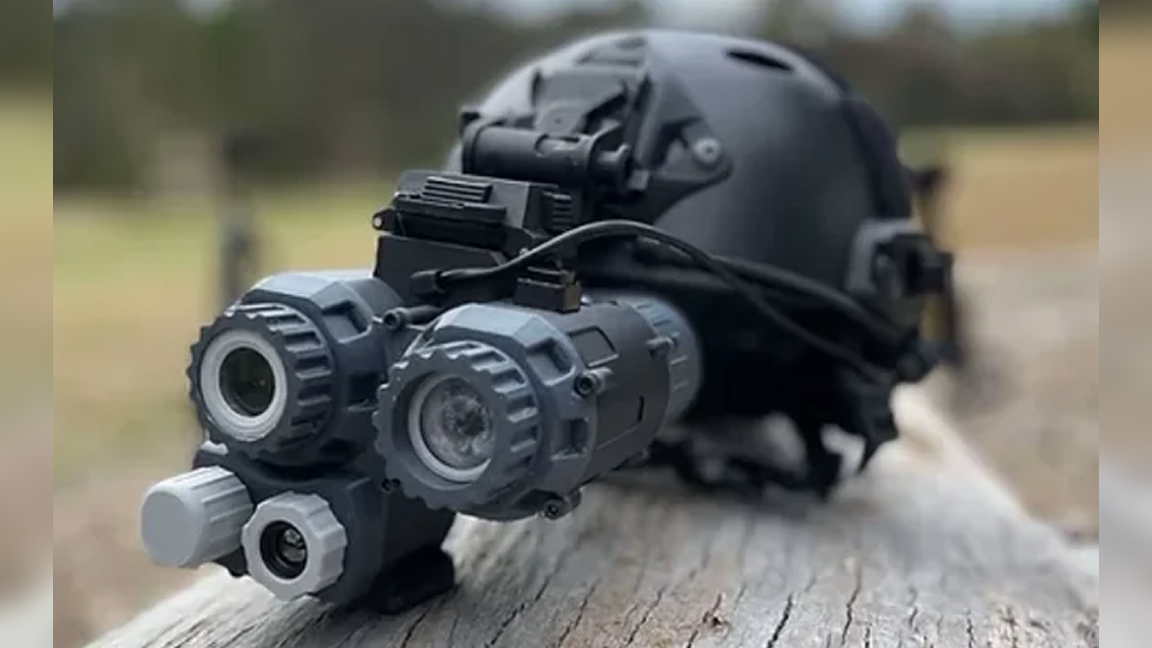Night vision camera support on the Raspberry Pi is nothing new but this crazy thermal fusion night vision helmet put together by maker and developer Angus Logue is absolutely something different. Using our favorite SBC, he’s blown our expectations out of the water by merging different night vision technologies together to make a prototype of a night vision helmet typically used in the military.
According to Logue, this project was put together as a tool to use for surveying nocturnal wildlife. It uses multiple video capturing methods and overlays them so you can see both a low light video feed with a thermal camera image overlayed on top at the same time. You don’t need to switch modes, just look around and reap the benefits of both cameras together.
This project took a while to develop and was heavily influenced by his recent degree in industrial design. According to Logue, it took over 6 months to take the idea from concept to a physical product he could actually use and test. This process involved experimenting with different camera modules and developing a mounting system to secure the hardware to a helmet for practicality. Naturally, Logue used a Raspberry Pi to prototype the project.
Its not explicitly clear as to which model of Raspberry Pi Logue has used. Looking at the build pictures, it looks like Logue has opted to use a Raspberry Pi 4 8GB model. We determined this by the position of the DSI connector on the left of the board (the Raspberry Pi 5 has a smaller PCIe connector there) and in a screenshot we can see that the system has 8GB of RAM. So the port placement and RAM identifies that a Pi 4 is the likely build platform. The project’s power supply which is mounted to the helmet so you don’t have to worry about cables while out and about using the goggles. The Pi is connected to a lowlight camera and features an infrared spotlight, the likely camera being a model of Raspberry Pi Noir. It also uses a 254 x 192 thermal imager to get the thermal effect.
The rig is also designed with a few buttons that can be used to control settings for things like magnification. All of the hardware is housed inside 3D printed cases which are mounted to a helmet which makes it much easier to wear than if these were just goggles. Unfortunately, we don’t get a good look at the code but Logue did mention becoming familiar with Python during the creation of this project.
If you want to get a closer look at this Raspberry Pi project, you can read more about it in greater detail over at Logue’s website and explore the post he shared to Reddit showing off the final design.
